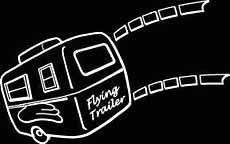|
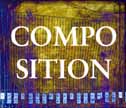

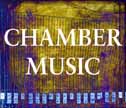
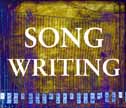

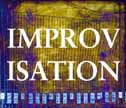

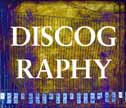

|

Experimental & Electro-acoustic Music
These next pieces exemplify some of my experimental music background, which began at an early age, then was nourished by my years at the Electronic Music Studio at Michigan, and simultaneously by the permissive and supportive atmosphere found in community radio stations such as WCBN-FM Ann Arbor, Michigan, and WORT-FM Madison, Wisconsin. I've done volunteer prgoraming for community radio, on and off, since 1980. (And I still have my FCC license!) Having a late-night radio slot gave me the chance to inflict difficult listening on lots of unsuspecting listeners. Do I have to mention the Chainsaw Capriccio or the Drywall Fantasia? Or the time I mixed Allen Ginsberg reading his poem Howl with live, howling feedback created on my Stick with the Infinite Sustain Feedback System? Life is good.
•
This first piece is representative of the text/sound poetry I have been experimenting with since 1980. In pieces such as this, layered voices and readings form compositional gestures and shapes such as in more traditional musical forms, but with the human voice as sound-source rather than traditional instruments. This piece is based on a visionary poem I wrote in 1984. The reader is Stuart Hinds.
in another world
•
This next group of pieces utilize a digital music technique called granular synthesis to tear apart and reconstruct sound files into new musical structures. Granular synthesis is a technique that samples the "grains" of a digitized sound-file, at a very fine level, then applies various algorithms to stretch the time, change pitch, and so forth, creating a new piece out of a very short excerpt of the source sound-file. The final effect can range anywhere from sublimely transcendant to utterly chaotic noise. I like both ends of the spectrum, myself.
This first piece uses the bossa nova polar lander (excerpt) from the Wind, Sand & Stars section below, as its seed source.
Twittering Machine (bossa nova mars polar lander remix)
I occasionally subject entries from my Road Journal podcast to granular system techniques as well, for example:
RJ055gs or RJ039gs
Next is a granular synthesis reshaping of an ambient recording of two neighborhood kids playing back-alley basketball in Chicago. At one point one of the boys yelled at his giggling friend, "Play normal!" Several different granular synthesis passes of the original sound-file are layered and mixed together here, to make the new piece. This was an absolutely fun little piece to assemble.
Playnormalgs
•
A threnody is a piece of memorial music: an ode or a song of lamentation. The piece below was created by using granular synthesis processes on a slice of the Wind, Sand & Stars piece coconspirator of dreams. It is from a series of slow-moving, trancelike pieces that I am working on as time permits, using granular synthesis techniques to create "space music." I hope to compile this series into a CD later. I offer it here as a memorial for the victims of 11 September 2001, of whom we have yet to see the end.
Threnody
•
A memorial piece for one of my musical mentors, experimental composer and co-founding member of the ONCE Group in Ann Arbor, George Cacioppo. This was constructed from recording a solo piece of piano music I wrote on reel-to-reel tape, then reversing the tape and playing the piece backwards; I added voice and flute over the top, using very long delays and reverbs. This was all originally done analog, with tape.
elegy for George
•
a stone flute. A long piece for processed voice and other sound elements, essentially my first big tape piece, assembled at the production facilties of WCBN-FM Ann Arbor, and at the Electronic Music Studio of the University of Michigan. This represents my first real attempt at a large tape piece, duration 30 minutes; later on, I used what I learned here to create several more long tape pieces for radio performance, ranging in length from 45 mintues to 6 hours. Much of this work was done in collaboration with Stuart Hinds, who is also the voice performer on this piece. In many ways very minimalistic and conceptual, and inspired by readings of metaphysical and mystical texts, a stone flute uses texts from shamanic and tribal sources.
a stone flute
•
Transit II. A piece of abstract difficult listening, consisting of several tracks of bamboo, wood, and concert flutes being played in layers and together. Art Durkee & Al Jewer, flutes. Play this at very loud volume, and listen for the subtones generated by close-frequency interface patterns. This and Exception Error D000 below were the only times we got complaints from the neighbors about what we were doing in the recording studio, and had to shut down. I feel so proud.
Transit II
•
Light, for voices and tape, was an ambitious piece for text/sound poetry. I used only the human voice, speaking live against a background of the same voices reading on tape, and composed in layers, with musical gestures; I think the piece shows that one can use voice as the only musical material to generate a complete musical experience. The linguistic information, the meaning of the words in the texts, is subservient to the musical phrasing of the voice, the layers and rhythms and tones. Light exists in three versions: the original version for radio performance; a second version for live performance and tape; and a third version for five voices all performing live. The foreground texts are my own poems. The background, pattern-reading texts are assembled from various sources, and treated in a cyclic manner similar to gradual-process or so-called minimalist music. (The version presented here is a studio rendering of version 2.)
Light

(Pronounced: Exception Error Dee-Thousand)

Extended-Technique Vocal Music
These three pieces were composed and performed by the group SH/AD, consisting of Arthur Durkee and Stuart Hinds. They were recorded in August 1985, at Moody Auditorium in Lubbock, TX, and performed as tape pieces for a concert entitled Worlds, held in Lubbock that same month, produced by Stuart Hinds.
Each piece featured different extended vocal techniques, in structured improvisational forms, and were recorded to 4-track reel tape in the acoustically resonant space of the large atrium of the auditorium. (Several other longer pieces were also recorded in this space during the same period, featuring for example tuned glass bowls, percussion, song, and other elements.)
The first piece, Mantra, uses harmonic singing, or overtone singing, as its foundation. Its mood is introspective, meditative, static, transcendant. The second piece, Chant, utilizes a shamanic text from an Ojibway medicine lodge ritual. This is shamanic, dramatic music: when we began recording, I found myself singing a lead line, all unplanned, that became the central melody of the piece, and around which we built all the other elements in multitrack; I can't tell you where this came from, it just seemed to appear, and take over the entire process. Listening to Chant again, after several years, I find myself feeling as though a numinous door had been opened to other worlds. The third piece in the set, Hamatsa, featuring guest lead vocalist Paul McMillion, is based around the myth of the Kwakiutl cannibal-spirit performed in the winter sacred riitual dances. The voices call to the hamatsa figure, and also in the voice of the cannibal spirit, making for a dramatic narrative piece of music theater.
Twenty years after co-creating these pieces, I still get a chill up my spine listening to them. I am pleased to present them here, publicly available for the first time.
Mantra
Algorithmic Computer Music
Since 2002, I have been returning to my roots in the electronic music studio and experimental music ventures that occupied my days in Ann Arbor, MI. Only now, instead of splicing tape, I am working with software synthesis and vintage analog synthesizers, of which Dragon's Weyr Studio has built a small collection.
Generative algorithmic music is created using mathematical and data-processing software. I have been working with software that generates music using fractal algorithms, so that the music becomes recursive and self-similar on several pitch- and time-scales, analogous to the self-similar forms seen in fractal graphics when you zoom in and out. Other pieces are based on numerical data sets that can be derived from any set of numbers: electrical meter readings, DNA code sequences, and the stock market are all possible sources.
Algorithmic Composition

Music for Javanese Gamelan
In 1985 to 1986, I spent a year living and studying in Surakarta, Central Java, Indonesia, as a Fulbright Student grantee. I worked closely with gamelan musicians for many months, learning and recording, and towards the end of my stay was able to set up a recording session for three new pieces for gamelan I had composed during the year. The piece below, NightWaters, was recorded just after sunset, and you can hear the night sounds of the region in the background. This was performed and reocrded at STSI-Solo, Central Java, 19 September 1986.
NightWaters for Javanese gamelan
During a visit to the Banyumas region of western Java, I was able to go out into the ricefields one night and record the frogs, insects and other night sounds. The interlocking sounds of croaking frogs were, in Javanese and Balinese mythology, the origin and inspiration for gamelan music, with its layered cyclic melodies. Kodok ngorek means "croaking frogs," and is also the title for a piece in the traditional gamelan repertoire; it also refers to a way of playing gamelan wherein two players play interlocking parts to create an additive melody, a direct evocation of the mythological origin of the music itself. Here is an excerpt of frogs in the rice paddy fields in the early morning hours, Purwokerto, Banyumas, Central java, Indonesia, 1986:
Kodok ngorek


|



